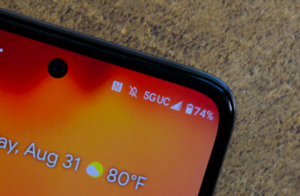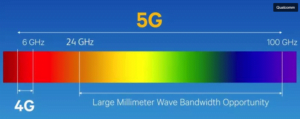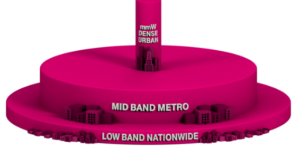Introduction
If you are a T-Mobile customer in the United States, it is likely that your phone has shown a 5G UC logo. Although it is common knowledge that 5G comes after 4G LTE, the specific distinctions between different forms of 5G are not frequently discussed. Here is all the information you should have about the 5G UC logo displayed on your phone.
What is 5G UC?
Different 5G networks vary in performance, with speeds and coverage varying greatly from one location to another. This is due to the fact that the network spectrum is used in varying ways in different areas.
Put simply, a 5G network can be categorized as low-band, mid-band, or mmWave. T-Mobile uses two types of branding, XR and UC, to differentiate between these variations.
5G XR and UC represent distinct varieties of 5G technology.
T-Mobile calls their low-band 5G deployments Extended Range 5G, or 5G XR. A large portion of the company’s assertion of having “nationwide 5G coverage” relies on the utilization of the lower portion of the 5G spectrum.
Low-band 5G is not very thrilling since it utilizes similar frequencies to 4G LTE. This indicates that you should not anticipate extremely fast speeds, but it does provide enhancements in latency. It provides more extensive coverage compared to the other two bands. Low-band 5G is typically found in underdeveloped regions due to its cost-effective infrastructure requirements.
5G UC logo on your smartphone

If you reside in a large urban area, your smartphone might be able to detect a 5G UC signal. This label shows where T-Mobile has deployed mmWave and mid-band 5G.
mmWave and mid-band, also known as C-band 5G, are located at the opposite side of the spectrum compared to low-band. These function at frequencies significantly higher than the cellular generations before them. They not just facilitate actual 5G speeds of close to 1 Gbps but also lower the likelihood of congestion in busy areas.
What is MMWave?
5G UC shows that your phone is using the quickest mmWave or mid-band frequencies for communication.
In fact, mmWave is the image that comes to mind when considering the transition from 4G to 5G. But it is not present everywhere. High frequencies have a restricted range and are most suitable for use in crowded city areas.
How Can barriers effects the signals?
Even so, barriers such as walls can significantly affect the strength of the signal. If your phone has weak signal, having 5G turned on can drain the battery.
How 5G UC is faster than regular 5G?

T-Mobile’s 5G UC networks are speedier compared to standard 5G as they utilize elevated frequencies, such as mmWave (shown above). It will consistently provide speeds that are faster than those of 4G technology. On the contrary, the company’s Extended Range 5G (5G XR) utilizes lower frequencies. This indicates that it is created to encompass vast regions similar to how 4G functions. It does not place as much emphasis on speed as UC does.
5 G UC on iPhone and Android
On both iPhone and Android bias, 5G UC refers to the advanced interpretation of 5G that leverages slice- edge technologies to maximize network capacity and speed. While the exact perpetration may vary slightly between device manufacturers and carriers, the underpinning principle remains harmonious – to offer users the best possible mobile experience.
How 5G UC Helps
Enhanced Connectivity
5G UC ensures harmonious and dependable connectivity indeed in densely peopled areas, colosseums, and civic centers.
Future- Proofing
By using advanced technologies, 5G UC lays the foundation for unborn inventions and operations that demand unknown bandwidth and responsiveness.
Productivity and Entertainment
From remote work and telemedicine to immersive entertainment and IoT( Internet of effects) operations, 5G UC unlocks new possibilities for businesses and consumers alike.
Conclusion
5G UC represents a significant vault forward in mobile connectivity, offering unequaled capacity, speed, and trustability. As the technology continues to evolve, it promises to reshape diligence, empower invention, and review the way we connect and communicate in the digital age.
FAQs
5G Ultra Capacity (5G UC) depends on mid-band and high-band frequencies that are not very common in rural areas. If your phone is always searching for a signal, you might experience shorter battery life than with regular 5G or 4G LTE.
5G UC is an abbreviation for Ultra Capacity 5G. T-Mobile has branded mid-band and mmWave 5G networks.
To disable 5G UC, go to the Settings app on your phone, then find Connections > Mobile Networks > Network Mode. In this location, you have the option to choose either 4G or 5G networks.
